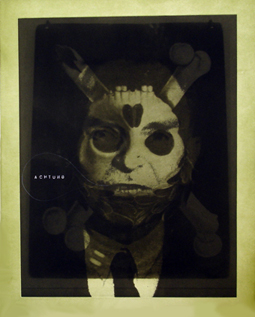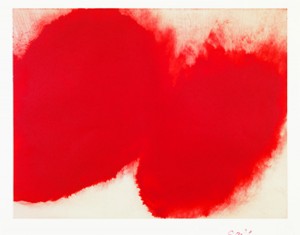Photo-etching is a technique that employs the use of ultra-violet light to fix the image onto the plate. It can be used with both hand-drawn and photographic imagery. In both cases the process involves using a “positive” on clear film which is contacted against a copper plate covered in a light sensitive emulsion.
Where the UV light reaches the coating it is hardened to form an acid resist, and where the light is blocked by the positive image, the coating remains soft and can be developed away, thus exposing the copper for biting in acid. The positive can be created by drawing onto a sheet of film with ink, paint or crayon, or by a photographic technique.
Example of a photo-etching
Thomas Zipp
‘Actung’ 2006
Polymer gravure
This technique utilises materials from the flexographic printing industry,usually used for printing packaging and labels, but in the completely opposite fashion to the process those materials were designed for. Instead of etching the image onto copper plates using acid, the image is exposed onto a light-sensitive polymer plate in the same way as with a photo-etching, using a positive and an Ultra-violet light. Again the positive can be created by hand or by using photographic techniques. The great advantage of the polymer gravure process is that it is capable of carrying a continuous tone, that is all the subtle range of greys between black and white, and it is incredibly sensitive to all the nuances of the artists drawing.
Example of Polymer gravure
Anish Kapoor
‘Untitled’ 2006


